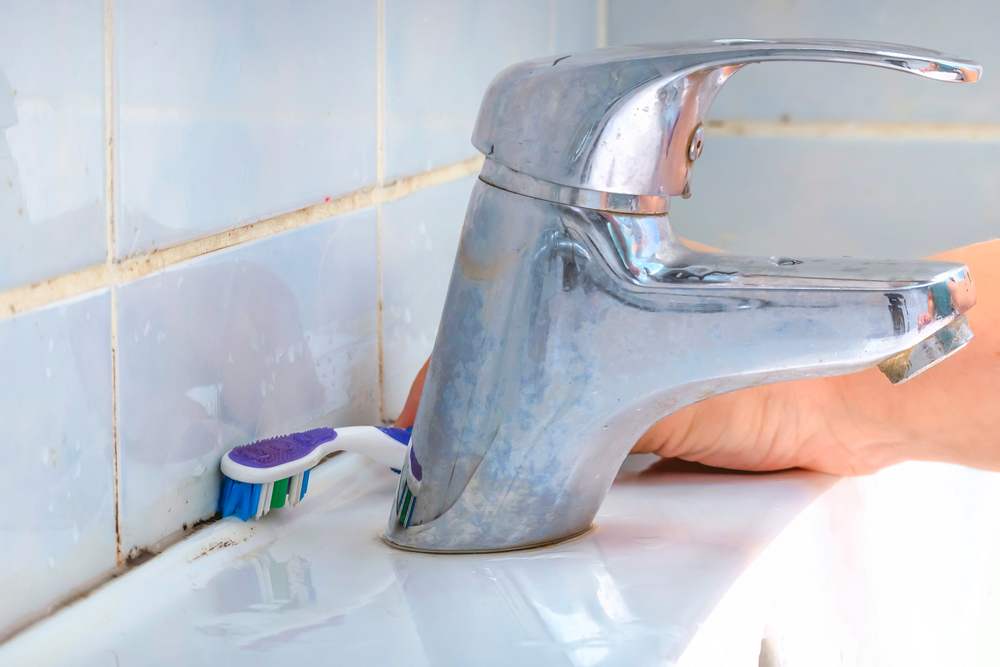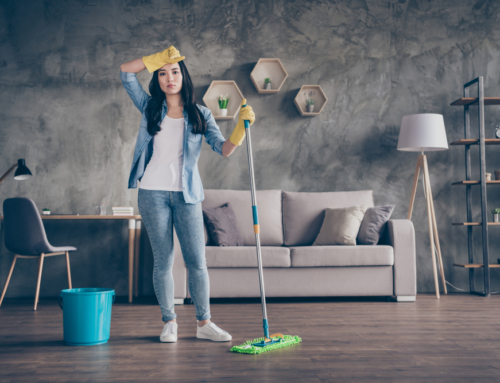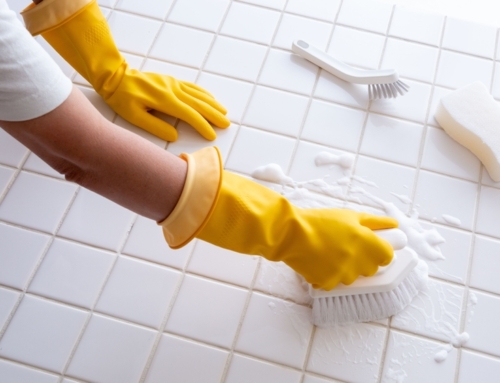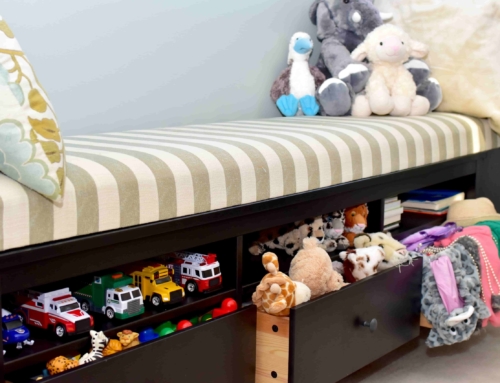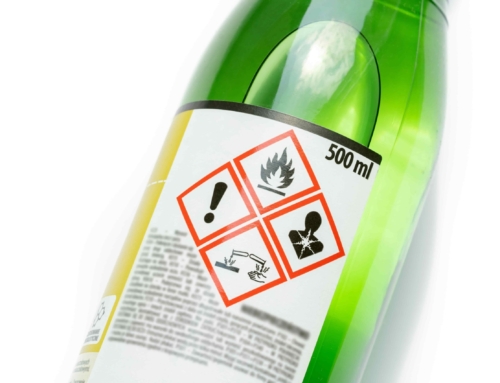Having mold in your home can be pretty annoying. It doesn’t just affect how our home looks, but it can also be dangerous for you and your family’s health.
At Clean My Space CT, we value your health. So, here are some expert tips on how to get rid of mold to help you out.
Different Types of Household Mold
Before teaching you how to get rid of mold, it is essential to know that there are different types of mold that can be found in a home. At first, mold may seem harmless. However, if you leave it untreated, it can pose as a serious health risks for you and your family.
So, here are the different types of mold that you should know about:
Alternaria
Alternaria is one of the most common molds you may find inside and outside your house. This type of mold usually thrives in damp areas, such as the sink or the shower, or dark and dimly lit places of your home. When there is a high concentration of Alternaria in your house, it can cause health problems, including allergic reactions and asthma attacks.
Aspergillus
Like Alternaria, Aspergillus is another common mold, but this one is typically found indoors. It can cause minor health problems to those who inhale it. However, they can also experience severe reactions, such as allergies, inflamed lungs, and respiratory infections.
Aureobasidium
This type of mold is often pink and black. You may commonly find it on wooden surfaces and furniture, painted walls, wallpaper, and around windows. Most people develop allergic reactions to this mold.
Chaetomium
If you smell a musty or old odor in your house, it is probably caused by Chaetomium. It is a type of mold that appears on water-damaged drywall.
Cladosporium
You may find this type of mold in both cool and warm places in your house, such as wooden floorboards and cabinets, and fabrics, such as curtains and carpets. It can cause breathing problems and respiratory issues.
Penicillium
This mold type is known for quickly spreading around the house and can cause a sinus infection, allergic reaction, and lung inflammation. You can find this in water-damaged furniture, insulations, carpetings, and furnishings.
Stachybotrys Chartarum
Stachybotrys Chartarum is one of the most toxic molds. It is black and has a musty smell. Moreover, it is more dangerous because it creates a toxic compound called mycotoxins. This compound can cause breathing issues, asthma attacks, sinus infections, depression, and fatigue.
Top 5 Common Causes of Mold in Your Home
Molds need several factors to grow and multiply in your house, and one of those principal factors is moisture. With moisture plus the right temperature and enough oxygen, mold will begin to grow and spread. Thus, it is crucial to learn the most common causes of mold in your home.
1. Persistent Humidity
If the humidity in your house is always high, then it’s prone to molds. This occurrence is natural due to the high moisture content in the air.
Moreover, molds caused by humidity are common, especially when you live near oceans or a large body of water. It can also worsen if you have poor ventilation in your house.
2. Leaking Pipes
Leaking pipes are the number one cause of mold build-up behind your drywall and underneath the sink. In addition to that, it can also contribute to ceiling and wall molds, especially if you have a second floor.
3. Leaking Roof
When your roof is damaged, molds can quickly grow in your house. The slow leak from the small holes in your roof can trap the moisture in your attic or ceiling as time goes by. Then, mold will eventually grow, multiply, and penetrate your walls and ceiling boards.
4. Poor Ventilation
A poorly ventilated home is highly prone to mold growth. The stagnant air is one of the key elements that encourage mold growth, especially if many appliances release steam.
5. Leaking Air-Conditioning System
Air conditioning systems contribute to the growth of a mold called Mucor. This mold causes allergy and can often be seen as white patches under a leaking air conditioner.
What Products Help in Getting Rid of Mold?
There are several products that you can use, along with the proper knowledge on how to get rid of mold. Here is a list:
Chlorine Bleach
Regular household bleach is the best product to get rid of mold. Aside from that, it can also remove discoloration. However, it is pretty potent and harsh and should be diluted before using. Furthermore, you should also be careful when using this product and should never be mixed with other cleaning material, as it can produce dangerous fumes.
Hydrogen Peroxide
This product is less harsh than chlorine bleach. Mixing a three to ten percent solution will give you a powerful tool to remove molds and lighten their stains.
Distilled White Vinegar
Vinegar is a natural cleaner due to its acetic acid component. Furthermore, it is more gentle than the first two products discussed in this article. However, the only downside when using vinegar in molds is that it cannot remove the stains, and you may need additional scrubbing and cleaning products.
Baking Soda and Borax
These two products each have a high pH that hampers the growth and survival of mold. In addition to that, they are also cheaper compared to the other cleaning products.
How to Get Rid of Mold In The Different Surfaces of Your House
Molds can grow almost anywhere if the right factors are satisfied. You may see them on your walls, floors, appliances, furniture, books, and even clothes. Removing them from these different surfaces and materials will have unique requirements. Let’s discuss them.
From Leather Shoes, Coats, Accessories, and Furniture
Are you wondering how to get rid of mold on your leather shoes, coats, accessories, and furniture? Well, here are the steps:
- Check if the mold hasn’t been there in a long time because if it is, then it may be impossible to save your leather items.
- Wear a facemask and take the items affected by mold outside your house.
- Brush as much surface mold as possible.
- Wipe its surface with distilled white vinegar. After that, take a fresh cloth and wipe it with a leather soap and water mixture.
- Dry it with a soft cloth.
- Leave it outside to air dry.
From Fabric
Fabric items also catch molds, especially if your home has recently been flooded. Here’s a step-by-step guide on how to get rid of mold from fabric:
- Wear a facemask so you won’t inhale the mold spores.
- Take it outside and brush away as much surface mold as you can.
- If washable, use the hottest water recommended on the care label and add a disinfectant.
- If there’s still a stain, use laundry bleach.
From Books and Paper
Your favorite books and important documents are also prone to mold when there is high humidity in the room. If you don’t catch it early, it can destroy the paper quickly. So, you better check every time you clean your bookshelf.
If you see a book or document with mold, the best way to get rid of it is to consult a professional curator.
From Tiles and Grouts
Tiles and grouts commonly encounter mold build-ups, especially those inside your bathroom. Here’s how to get rid of mold from them:
- Mix bleach and water in a 1:16 ratio.
- Apply the mixture to mold-infested areas.
- Let it sit for at least 15 minutes.
- Scrub and re-treat if needed.
- Rinse with water and wipe with a dry piece of cloth.
From Household Appliances
Washing machines, coffee makers, refrigerators, and ACs are prone to getting molds because they combine moisture and heat to function. Here are the steps on how to get rid of mold from them:
- For your washer, clean it by running a hot water cycle mixed with chlorine bleach.
- Wiping surfaces with distilled white vinegar will do the job for your refrigerator and other appliances.
From Walls and Flooring
Leaking pipes, room, and AC can cause molds on your wall and flooring. If it happens, here’s how to get rid of mold from these surfaces:
- In cleaning mold from wood or drywall, you should add detergent to your bleach and water mixture.
- Apply the mixture with a mop or sponge. Keep in mind not to over-saturate the surfaces.
- Do not rinse; just allow the solution to dry.
How to Prevent Molds from Coming Back
Once you’re done getting rid of the molds from the different surfaces of your house, make sure to have systems in place that will prevent them from coming back. Doing so will save you from another round of deep cleaning. Here are some tips:
- Place a dehumidifier in your home to keep humidity at the right level.
- Open bathroom doors and windows or install an exhaust fan and turn it on during and after showering to remove moisture.
- Spread your shower curtain after taking a shower to allow it to dry correctly.
- Make sure your house has proper ventilation.
- Get leaks from your roof, pipes, and AC fixed.
Get Help from A Professional Cleaner
Cleaning molds on your own is very doable. However, if you don’t have the right cleaning products to get rid of it, you might put yourself in danger, as you can breathe in mold spores that can cause various health problems.
So, if you see any signs of mold, don’t hesitate to check out our residential cleaning services. We are a highly-rated, trustworthy, and affordable solution to your mold problems!


